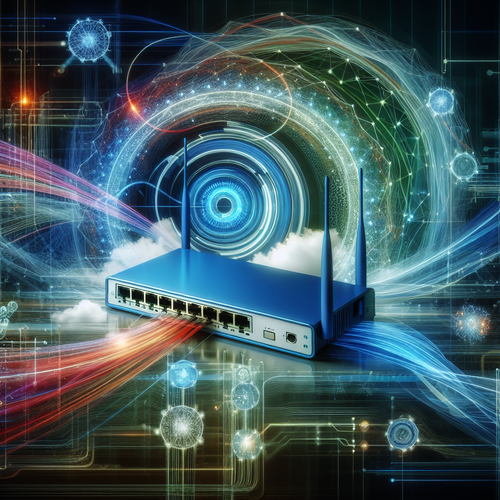
Introduction to Edge Computing Routers with AI Analytics
Introduction to Edge Computing Routers with AI Analytics
In today’s fast-paced digital world, the need for faster and more efficient data processing has become a necessity. Edge computing has emerged as a revolutionary technology, pushing data processing closer to the source of data generation. This tutorial delves into the concept of edge computing routers and the role of AI analytics in enhancing their capabilities.
What is Edge Computing?
Edge computing refers to the practice of processing data near the data source rather than relying solely on centralized cloud-based systems. This approach reduces latency and bandwidth usage while enabling real-time processing and analysis. It is particularly beneficial for applications that require immediate insights, such as IoT (Internet of Things) devices.
The Role of Routers in Edge Computing
Routers serve as essential components in edge computing environments. They facilitate the communication between IoT devices and the edge servers. By managing data traffic efficiently, routers enhance the performance of edge computing systems. The integration of AI into routers further amplifies their capabilities, enabling smarter data management and analysis.
Advantages of AI Analytics in Edge Computing Routers
- Real-Time Analytics: AI analytics provide immediate insights into data, allowing organizations to react swiftly to changing conditions.
- Enhanced Decision-Making: By analyzing data at the edge, businesses can make informed decisions based on up-to-date information.
- Reduced Latency: Processing data close to the source minimizes the time it takes to gather and analyze information, leading to quicker responses.
- Improved Efficiency: AI-driven analytics can optimize network performance by identifying patterns and automating routine tasks.
- Cost Savings: By reducing the amount of data sent to the cloud, businesses can save on bandwidth costs.
Applications of Edge Computing Routers with AI Analytics
The combination of edge computing routers and AI analytics finds applications in various sectors:
- Smart Cities: Edge computing routers enable real-time monitoring of city infrastructure, traffic management, and public safety systems.
- Healthcare: Medical facilities use edge computing for real-time patient monitoring and data analysis, improving patient outcomes.
- Manufacturing: AI analytics in edge routers help optimize production lines through predictive maintenance and quality control.
- Retail: Retailers utilize edge technology to analyze customer behavior in real-time, enhancing customer experiences.
Setting Up an Edge Computing Router
To set up an edge computing router with AI analytics, follow these steps:
- Assess Your Needs: Determine the specific requirements of your business and the type of data you need to process.
- Select the Right Router: Choose a router that is compatible with edge computing technologies and has the necessary computational power.
- Install Necessary Software: Implement AI analytics software that can analyze data on the router itself.
- Configure Network Settings: Set up the router to connect with IoT devices and edge servers securely.
- Monitor Performance: Regularly assess the router’s performance to ensure it meets your business needs.
Troubleshooting Common Issues
If you encounter issues with your edge computing router, consider the following troubleshooting tips:
- Connectivity Issues: Verify network connections and ensure devices are properly configured.
- Performance Lag: Check the router’s processing capacity and consider upgrading if necessary.
- Data Accuracy: Ensure that the AI analytics software is properly trained on relevant data.
Conclusion
Edge computing routers equipped with AI analytics are transforming how we process and analyze data. The ability to gather real-time insights directly at the data source not only enhances efficiency but also enables organizations to stay competitive in a rapidly evolving digital landscape. By adopting these technologies, businesses can unlock new possibilities and drive innovation.
For more insights on AI and edge computing, check our article on Integrating AI with Edge Computing for Enhanced IoT.













